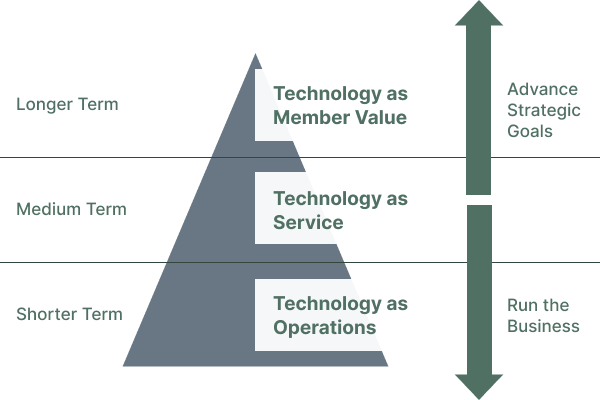At Ellipsis Partners, we guide you step-by-step through developing your technology roadmap, bringing clarity to the complex issues and options you face. We introduce you to emerging trends in effective IT, with a focus on the unique aspects of association management. Using our familiarity with the goals, structure, and challenges of association management and our expertise in current and emerging technology, we work with you to develop a clear technology roadmap.
During the strategy development process, our team works closely with members of each department or strategic area of your organization to identify their unique needs. We combine this context with an objective assessment of IT components such as infrastructure, systems, and IT management practices. And we use our knowledge of technology solutions available in the market as well as association best practices to determine how well the various technology components serve our clients.
Technology Assessment
Ellipsis Partners’ technology assessment investigates your systems, staffing, skills, needs and budgets to create a realistic plan for success. Looking closely at your organization’s structure, Ellipsis Partners takes the system capabilities and needs outlined by staff and members, and identifies gaps in system functionality for the membership database, program management, donor and fundraising management, finance, and other internal tools and systems.
Understanding your staff and members’ pain-points, goals, and vision can transform your approach to technology. Engaging in a process where members and staff feel heard can bring them on board with change management efforts. A technology assessment process can help move the organization forward on many fronts.
Technology Strategic Planning
By viewing technology through these different layers, we can apply different methods, people, and timelines to planning enhancements, scheduling replacement, and crafting solutions.
Design Thinking
Ellipsis Partners utilizes design thinking to help associations approach complex challenges from a new perspective. The Design Thinking approach to tasks or problems explores understanding your users, challenging traditional assumptions, and finding innovative strategies that are less apparent under initial review in a computational way.
Empathize
Develop a deep understanding of the challenge.
Define
Clearly articulate the problem you want to solve.
Ideate
Brainstorm potential solutions. Select and develop your solution.
Prototype
Design a prototype to test your solution.
Test
Engage in a continuous short-cycle innovation process to continually improve your design.

